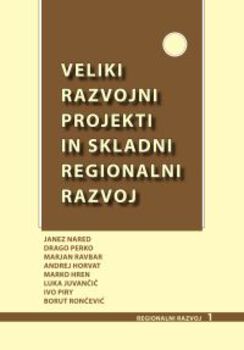Veliki razvojni projekti in skladni regionalni razvoj
In order to reduce the development gap separating it from the most developed European countries, Slovenia faces numerous developmental challenges. On the one hand, it is trying to promote competitiveness and innovation to stimulate economic growth, and on the other hand it is using various measures to ensure more even development across its entire territory. In the past, the main efforts focused on effective inclusion in the EU and the Eurozone, whereas now seeking domestic reserves to establish and strengthen Slovenia’s position among the most developed countries is at the forefront. This demands an important shift in thinking because achieving developmental goals is no longer in the domain of others or dependent on others, but is the result of Slovenia’s own decisions, knowledge, and resourcefulness. This must be taken into account, especially at the beginning of a new program period and when preparing new strategic development documents.
Therefore, this book (‘Major development projects and harmonious regional development’) focuses on one of these documents—that is, the Resolution on National Development Projects for 2007–2023—and its development challenges and influences on harmonious regional development. In addition, traditional regional policy and development topics are also discussed. First of all, the introductory chapters present the resolution as a whole, followed by articles discussing its individual parts (i.e., planned projects) and explaining them from various perspectives. The majority of authors are in favor of the resolution, but discussions to date have raised certain issues that cannot be ignored. It can be established that the resolution represents an implementation of the predominant guideline of Slovenia’s development over the past several decades—that is, polycentric development—by focusing primarily on the development of urban centers, from which beneficial effects should also spread to the countryside. It hence follows the findings of experts claiming that dispersed assistance is rarely effective. In addition, through livelier developmental dynamics and strengthened development potentials, individual development centers can more easily compete on global markets. However, the resolution ignores certain key aspects, such as the issue of public participation in planning, energy efficiency, sustainable development, and so on. Other articles dealing with harmonious regional development primarily focus on two topics: the role of knowledge in regional development and the importance of natural factors in regional planning. This last aspect is especially important because it is often ignored in development planning.
Downloads

Series
License

This work is licensed under a Creative Commons Attribution-NonCommercial-NoDerivatives 4.0 International License.
